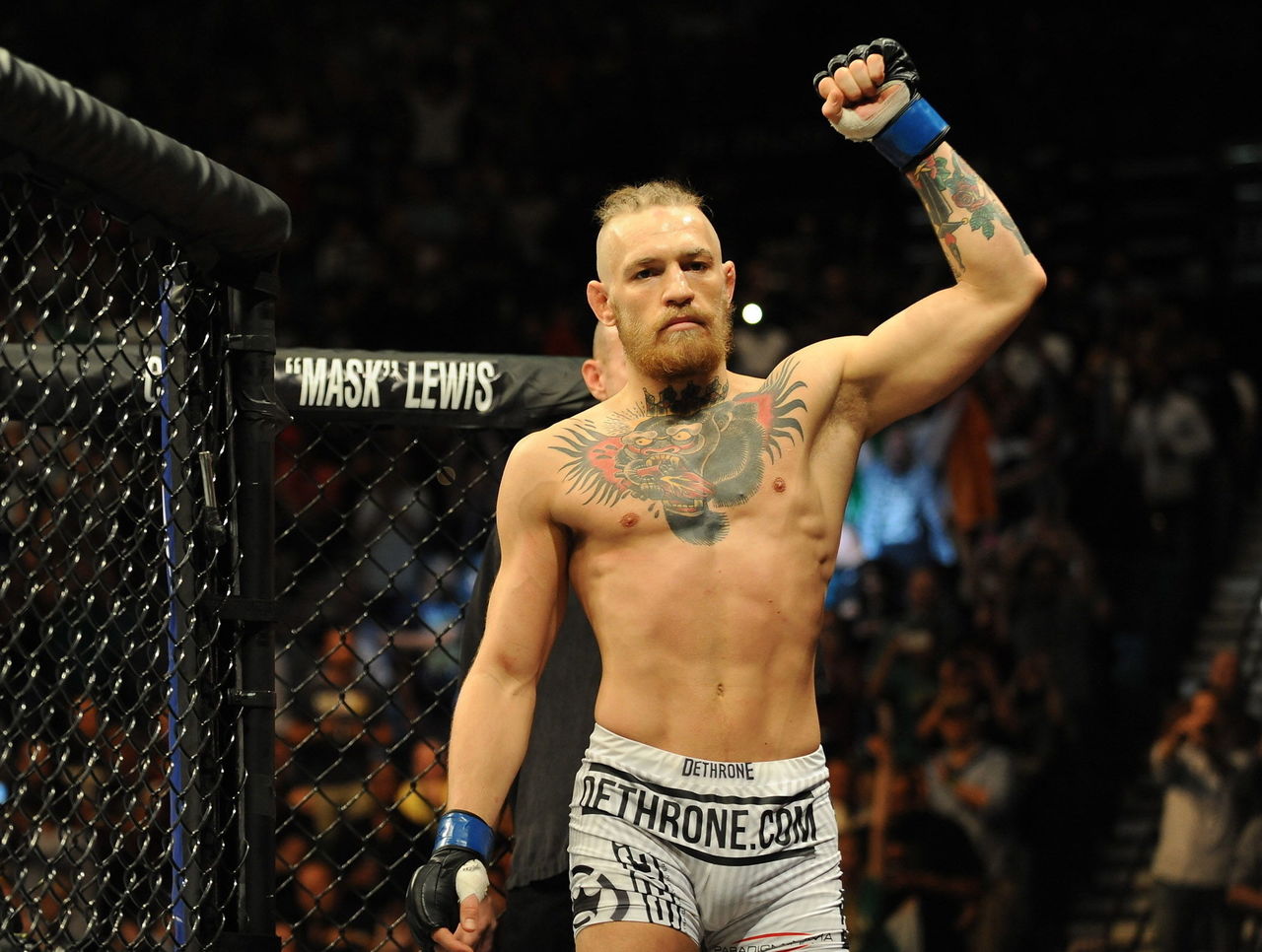4 'Notorious' years later: A breakdown of McGregor's rise to the top
"We're not just here to take part; we're here to take over."
Today marks the four-year anniversary of Conor McGregor's first fight inside the Octagon.
Even taking into account the hype that he brought into his debut as a European champion, few (besides himself, of course) could have predicted that the then 23-year-old Irishman would become not only the biggest name in MMA, but one of the most famous sportsmen on the planet.
How did everything happen so fast for McGregor? Taking a year-by-year look, we can see how "The Notorious" ascended from UFC rookie to industry game changer.
2013 - The newcomer
#OnThisDay in 2013: @TheNotoriousMMA made his debut! The rest is history...
— UFC Europe (@UFCEurope) April 6, 2017
📽 https://t.co/pRA2Hj11ns pic.twitter.com/JSjJrru9Dr
It all started with Marcus Brimage.
"The Bama Beast" may be a footnote now, but back in April 2013 he held a 3-0 UFC record and was expected to provide a reasonable challenge to McGregor. Those expectations didn't last long as McGregor needed just 67 seconds to dispatch of Brimage, showing off the signature striking style that would make him an instant fan favorite.
McGregor's second bout saw him face off with Max Holloway. "Blessed" was just 21 years old at the time, and the bout was hampered by leg injuries to both fighters. It remains one of only two times that McGregor has gone to the scorecards to pick up a win.
Afterwards, it was revealed that McGregor tore his ACL during the bout and that surgery would keep him out of action for 10 months, which only served to increase the growing fervor to see him compete again.
2014 - The chosen one

Once McGregor was healthy again, he didn't disappoint.
The Notorious recorded two more fast finishes in 2014, defeating former "Ultimate Fighter" winner Diego Brandao and top-10 featherweight Dustin Poirier.
Neither opponent made it out of the first round.
It was around this time that critics began to speculate that McGregor was receiving favorable matchmaking against challengers who couldn't exploit his perceived grappling deficiencies (though Brandao and Poirier both had excellent jiu-jitsu, they were well known for engaging in standup battles).
More importantly, the Poirier bout marked the point where McGregor's promotional skills became a point of emphasis. He referred to Poirier as a "journeyman" and a "broken man" in the leadup to their fight.
When he backed up his talk in resounding fashion, everyone was forced to take notice.
2015 - The rock star
A win over Dennis Siver to open 2015 did little to quell the doubters who wondered when McGregor's skills would truly be put to the test. They got their wish when it was announced that his next fight would be against nigh-unbeatable featherweight champion Jose Aldo.
During the tour to promote the Aldo fight, McGregor's star power became blindingly bright during a stop in his hometown of Dublin. Pandamonium ensued and an instant classic clip was created as McGregor stole the belt from under Aldo's nose, a blatant sign of disrespect that fans ate up:
Unfortunately for both parties, Aldo suffered an injury that derailed their UFC 189 meeting; instead, McGregor faced Chad Mendes for an interim belt.
Mendes' high-level wrestling was supposed to expose McGregor and for one round he was in complete control. His cardio betrayed him (Mendes stepped in on less than two weeks' notice) in Round 2 and he became McGregor's next knockout victim. That win provided at least some idea of how McGregor would deal with adversity.
Not that he faced much of it in his eventual clash with Aldo at UFC 194. After almost two years of verbally abusing Aldo, McGregor needed just 13 seconds to knock out the Brazilian and capture the gold.

Never had anyone in the UFC ever called their shot with such authority and if McGregor had walked on water later that night, it would have been the second-most incredible thing he did that year.
2016 - The game changer
McGregor's 2016 season would prove to be one of the most successful ever for any fighter, though it didn't go exactly as planned.
As odd as it sounds now, McGregor was once supposed to fight Rafael dos Anjos in an attempt to add Dos Anjos' lightweight title to his collection. Dos Anjos suffered a foot injury and Nate Diaz was brought in at the last second for a welterweight bout at UFC 196.
Diaz submitted McGregor in what was considered a massive upset, but all that did was set up an electrifying rematch at UFC 202 that McGregor won by majority decision.

Aside from the entertainment factor, what stood out the most from the encounters was the pay-per-view buyrates. Both Diaz fights reportedly drew over 1.6 million buys, numbers that confirmed McGregor's status as a top moneymaker.
McGregor parlayed that win into a main event spot in the UFC's Madison Square Garden debut, this time facing Eddie Alvarez for the lightweight belt that he still coveted. The result was another knockout win for McGregor, and his fourth straight PPV appearance to crack one million buys.
By the end of Year 4, McGregor made the case that he is arguably the most successful superstar in UFC history.
2017 - ???
Soon to be 29, McGregor finds himself in a unique position where he can fight anyone he wants, but there are few opponents who are conceivably worth his time and money, hence the Floyd Mayweather overtures.
McGregor is adamant that he will fight Mayweather next and no one else, and if those negotiations drag on for the next eight months, it's entirely possible that McGregor's fighting resume has a big, fat blank space in the 2017 section. Should that be the case, this could be the first year in a while that The Notorious shows any signs of slowing down.
(Photos courtesy: Action Images)